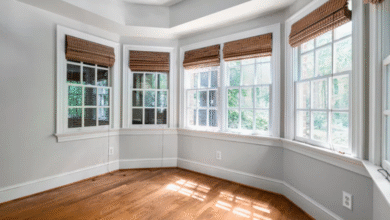How to Maximize Natural Light in a Windowless Basement

Converting a dark, enclosed basement into a bright, livable space may seem challenging, especially when there are no windows. However, when executed properly, even windowless basements can be transformed into inviting, functional areas. Strategic lighting design, reflective materials, and thoughtful planning are essential for achieving this goal. For homeowners exploring basement remodeling in Cumming, creating the illusion of natural light should be prioritized from the outset of the renovation.
Rethinking the Lighting Layout
A well-lit basement starts with a professional lighting plan. Layering different types of light, ambient, task, and accent, can simulate daylight and eliminate the cave-like feel. Recessed LED fixtures are often preferred for basements due to their low profile and ability to spread light evenly across the ceiling without taking up visual space.
Proper light distribution matters just as much as the fixtures themselves. By spacing lighting evenly across the ceiling and targeting dark corners with accent lighting, the basement begins to feel more expansive and open.
Understanding the best basement lighting options emphasizes the importance of combining color temperature with placement. Cool white light closely mimics daylight and works well with neutral wall colors to bounce brightness across the room.
Strategic Use of Reflective Surfaces
Once lighting is in place, the next priority is maximizing its effect. Walls painted in light hues, especially whites, creams, or soft grays, reflect light rather than absorbing it. High-gloss paint finishes and satin sheens enhance reflectivity without being overpowering.
Mirrors are another powerful tool. A large mirror or a set of smaller ones can visually double the space and amplify artificial light. For finished basements with entertainment areas or play zones, mirrored surfaces can be integrated subtly through furniture, wall panels, or decor elements.
Glossy flooring materials, metallic finishes, and glass accessories also contribute to bouncing light around the room. These elements should be coordinated with the overall aesthetic for a seamless result.
Incorporating Architectural Enhancements
The structural elements of a basement can either support or hinder light flow. Where ceiling height permits, installing light wells or faux skylights can enhance vertical light distribution. Cove lighting or LED strips embedded in ceiling soffits provide indirect illumination that’s gentle yet effective.
In some layouts, it’s also possible to introduce glass-paneled doors or interior windows that share light between rooms. These modifications are particularly useful when part of the basement receives more lighting from upper floors or staircases.
An often-overlooked design tactic involves minimizing visual clutter. By using open shelving, clean lines, and a minimalistic approach to furniture, the space appears brighter and more open, even with artificial light sources.
Enhancing With Creative Fixtures
Lighting fixtures play both a functional and decorative role. Incorporating modern pendants, track lights, or concealed LED bars can reinforce the design theme while elevating overall brightness.
In the context of creative lighting solutions for dark basements, professional insights point to the importance of fixture design and placement. Accent lights focused on artwork, plants, or architectural features add dimension and prevent the space from feeling flat.
Integrating smart lighting systems allows homeowners to adjust brightness and color temperature throughout the day, mimicking natural sunlight cycles and enhancing comfort in windowless zones.
Conclusion
Maximizing light in a windowless basement relies on a blend of strategic lighting, reflective materials, and thoughtful design choices. From layered lighting plans and pale color schemes to mirrors and architectural features, every element should work together to simulate the presence of natural light. Relying on expert remodeling services ensures that these techniques are applied with precision, transforming the basement into a bright, comfortable space suitable for any purpose.





